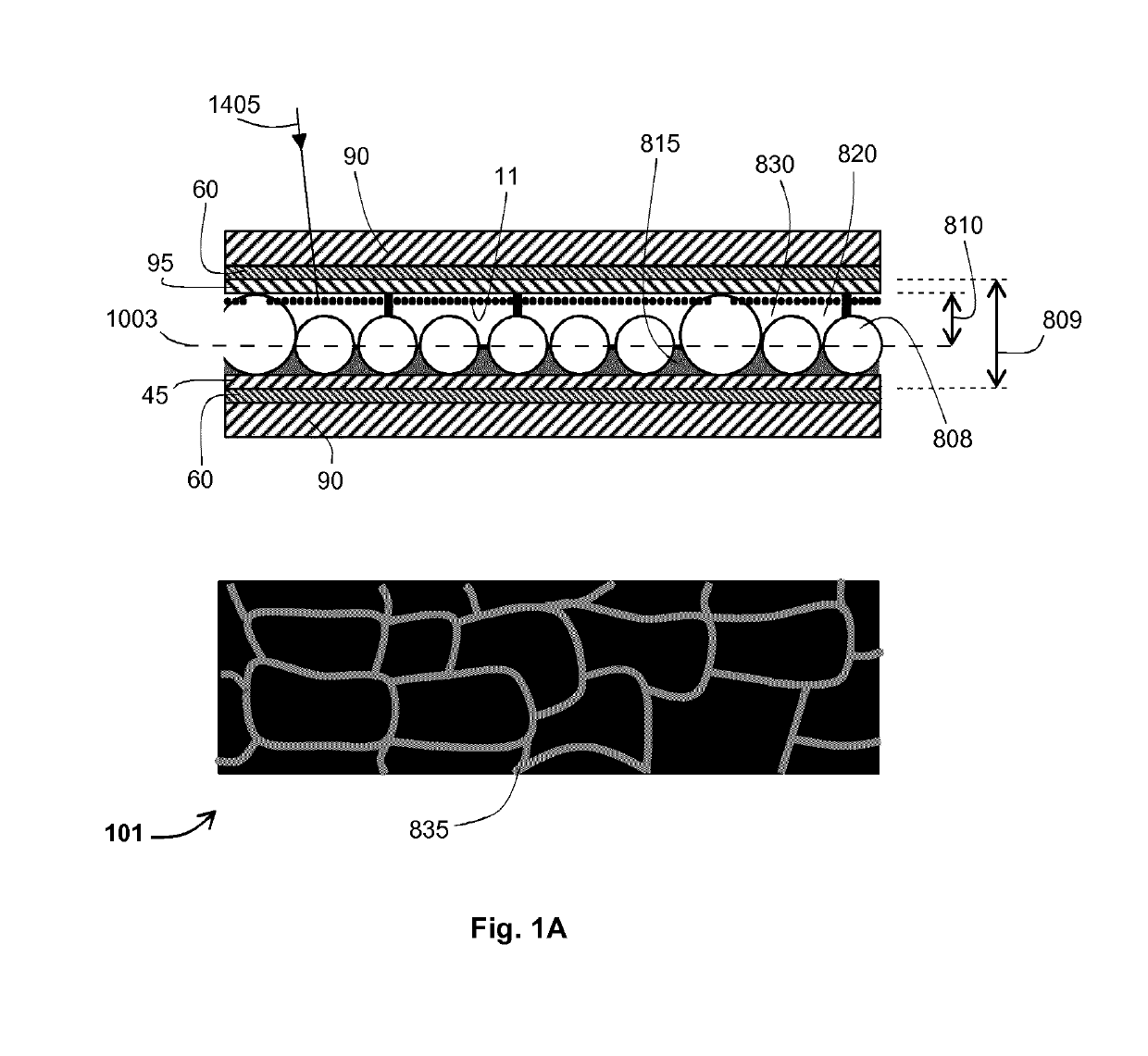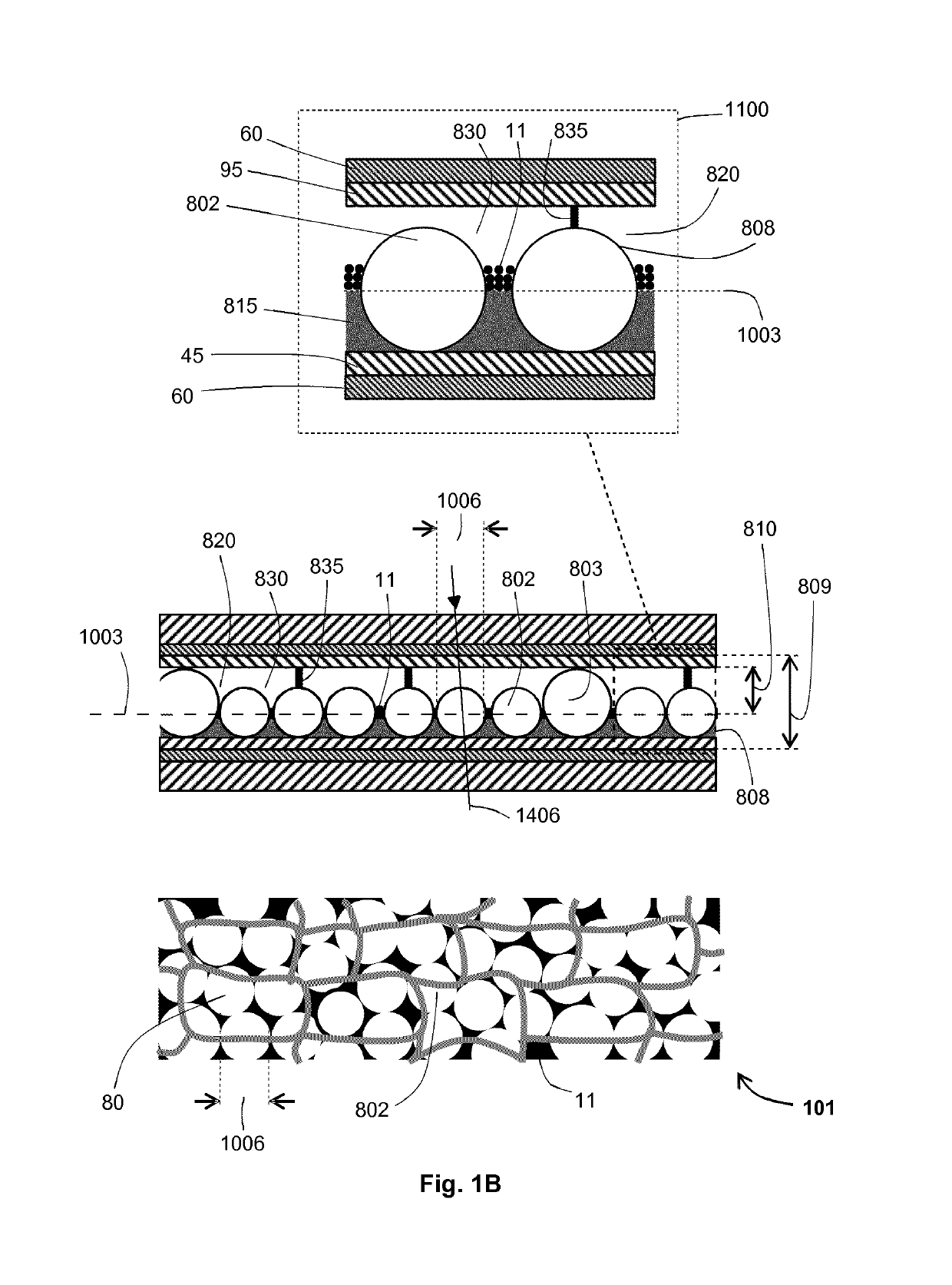Wide operating temperature range electrophoretic device
a wide-range, electrophoretic technology, applied in the direction of door/window protective devices, instruments, constructions, etc., can solve the problems of increasing the haze of the electrophoretic device, the inability of the suspension fluid to dissolve/solubilize or swell the polymer elements within, and the inability of the suspension fluid to absorb the haze, etc., to achieve the effect of minimizing or avoiding the content of the aromatic fluid
- Summary
- Abstract
- Description
- Claims
- Application Information
AI Technical Summary
Benefits of technology
Problems solved by technology
Method used
Image
Examples
Embodiment Construction
[0081]The present invention provides an electrophoretic device whose electrophoretic cell has one or more transparent light states. The device has a wide operating temperature range suitable for many of the climates found in highly populated parts of the world. Advantageously, the device is suitable for applications that are exposed to outdoor temperatures and to sunlight.
[0082]In a first aspect the refractive index of non-planar, solid polymer elements within the electrophoretic cell are refractive index matched to the suspending fluid over half or more of the operating temperature range by matching the thermo-optic coefficient (i.e. the temperature coefficient of refractive index per Kelvin also known as the differential of refractive index with respect to temperature do / dT) of the solid polymer to the optically-transparent fluid's coefficient. This is achieved using optically-transparent, elastomeric, solid polymer.
[0083]In another aspect the chromatic dispersion of non-planar, s...
PUM
| Property | Measurement | Unit |
|---|---|---|
| temperature | aaaaa | aaaaa |
| operating temperature | aaaaa | aaaaa |
| operating temperature | aaaaa | aaaaa |
Abstract
Description
Claims
Application Information
 Login to View More
Login to View More - R&D
- Intellectual Property
- Life Sciences
- Materials
- Tech Scout
- Unparalleled Data Quality
- Higher Quality Content
- 60% Fewer Hallucinations
Browse by: Latest US Patents, China's latest patents, Technical Efficacy Thesaurus, Application Domain, Technology Topic, Popular Technical Reports.
© 2025 PatSnap. All rights reserved.Legal|Privacy policy|Modern Slavery Act Transparency Statement|Sitemap|About US| Contact US: help@patsnap.com


